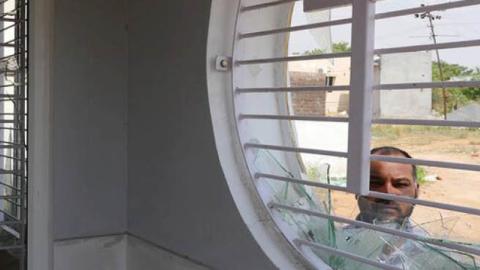India is one of the world’s most enticing tourist destinations, offering photogenic locales and an enticing and vibrant culture. Today, however, the sub-continent’s teeming population has been assaulted by COVID-19, stifling tourism and most recently hosting more confirmed coronavirus cases than the total reported by China– about 90,000.
How well India’s massive and– in some regions– poverty-stricken population will endure this present pandemic is anybody’s guess. However frightening it is, coronavirus isn’t the only worrisome epidemic in India.
In recent years, widespread reports of religious persecution – particularly since the election of Prime Minister Narendra Modi in 2014 – continue to exponentially increase. In that context, it was unsurprising that on April 21, a Christian Post headline declared, “Christians in India see dramatic increase of attacks in 2020.”
Several Christian publications continue to report an array of physical attacks on pastors, churches and even entire villages, primarily by radicalized Hindus. Last year, Religion Unplugged reported an exclusive on how Hindu nationalists have been shutting down house churches across India. Second only to India’s much larger and restive Muslim population, India’s Christians receive more than their share of abuse and are frequently accused of producing “forced conversions,” a.k.a. proselyting.
Demographically, Christian believers comprise only a tiny portion – about 2.3 percent of India’s enormous population of 1.3 billion. Some believe Thomas the Apostle brought Christianity to India in A.D. 52. Meanwhile, nearly 80 percent of Indians are Hindu, while some 14 percent are Muslim. India has a long history of Arab settlements and conquests since the 7th century.
There’s no question that India’s Muslim communities are increasingly targeted by Hindu activists and vice versa. Such attacks provoke retaliation, and this battle will not be quelled anytime soon.
At the same time, the U.S. Commission on International Religious Freedom’s (USCIRF) 2020 report confirmed that India’s Christians are also suffering intensifying persecution. Violence against Christians has swelled, the Commission recounts, “with at least 328 violent incidents, often under accusations of forced conversions. These attacks frequently targeted prayer services and led to the widespread shuttering or destruction of churches. And many of these churches are comprised of converts from Hinduism, or its radical political movement, Hindutvas.”
To many westerners, India’s caste system seems like a relic from past centuries, but unfortunately it still exists. In fact, it is estimated that 90 percent of Christian converts from Hinduism are Dalits – sometimes called Untouchables – who spiritually migrate into a new faith free of their low-class background. Nevertheless, many of them don’t experience much difference in their standard of living and continue to suffer their birth castes’ economic disadvantages.
I asked Stephen David – an award-winning, 25-year veteran Bangalore journalist – why this is so. He explained:
Most of them are not well educated because they don’t have access to good, quality education. The ones who do well in life often migrate far away from their own kith and kin to assimilate themselves with a new set of friends and families keeping with their newfound wealth and status. Worse, caste politics has not even spared the church that is supposed to be a haven of equity, equality and social justice. These lower-caste Christians are constant targets of attacks from their near and dear ones too who continue to be in the old faith, Hinduism, and are generally goaded by the extremist, fundamental right-wing groups to go after neo-converts, whom they accuse of fleeing their “mother” faiths for “foreign” ones.
Since many explanations for Indian abuse of Christians refer to conversion from Hinduism, or defiance of India’s fungible anti-conversion laws, I asked Stephen David about how India’s courts have actually ruled on the subject. He cited a specific 1977 case– Rev. Stainislaus vs. State of Madhya Pradesh.
This case, he told me, examined whether the right to practice and propagate one’s religion also included the right to convert. The court upheld the validity of the earliest anti-conversion statutes. The Court also found that “restrictions on efforts to convert are constitutional because such efforts impinge on “freedom of conscience” and “public order.” In one of its conclusions, the Court held that propagation (of a faith) only indicated persuasion/exposition without coercion, and that the right to propagate did not include the right to convert any person.
The reality, however, is that many who are simply sharing their faith are often subjected to false claims of violating anti-conversion laws through fraud or coercion. Indian society simply does not hold to the same understanding of religious freedom as we do here in the United States– an understanding that includes the freedom to share and change one’s faith.
To clarify further, Stephen David described another related account:
At the 1931 conference of Missionary Societies of Great Britain and Ireland in London, missionary and Baptist preacher Frederick R. Meyer asked Mahatma Gandhi whether he had found peace without acknowledging the message of Christ. Gandhi replied, “Religion is a personal matter, and I am not going to ask another man to become a Hindu or a Parsi. I would be doing something contrary to my belief. I am sharing with you my own experience, and trying to show you as fellow-workers that probably, if you could see eye to eye with me, your work would flourish more and more. You have amazing self-sacrifice; you are great organizers; you are good men. I want to multiply occasions for your service. I want to work closer with you, but I do not want you to get India to change her faith.
And how do the Hindutva movement’s fingerprints appear on India’s religious freedom record? Again, I asked my journalist friend for his perspective:
The BJP’s parent organization, the RSS, paints Christians and Muslims with the same brush, as faiths alien to the motherland of India. Both the faiths are perceived as aggressive proselytizers, and the party fears that their numbers will be outnumbered if they are left unchecked.
BJP/RSS ideologues, from India and their supporters overseas including in the U.S., hate Christian missions among the downtrodden, in the rural hinterland and in the tribal belts. They accuse Christians of masking social welfare activities for conversion, blaming even icons like Mother Teresa of indulging in conversion.
Christians run the best schools and college – the best medical school in India is Christian Medical College, Vellore, consistently rated number one by India Today magazine; the Jesuits run a chain of schools and colleges that have produced India’s top leaders across the spectrum. Delhi’s St. Stephen’s College, a Scottish Presbyterian school, has produced India’s top bureaucrats and political leaders.
[Nonetheless] The Hindu Right sincerely believes it has a social responsibility to revitalize Hinduism and to protect Hindus culturally, religiously and demographically.
So it is, then, that despite India’s position as a U.S. ally, as a result of India’s Hindu-based discrimination, the 2020 USCIRF report took a more negative view of India than ever before. It pointed out that in October 2019, “U.S. Ambassador-at-Large for Religious Freedom Samuel D. Brownback traveled to India. The Indian government, however, continued to reject the State Department’s and USCIRF’s reporting on religious freedom violations in India.”
For these reasons, and due to myriad examples of persecuted religious minorities, for the first time, USCIRF’s report recommended that India be designated as “a Country of Particular Concern” or CPC. This decision was made because of India’s record of “engaging in and tolerating systematic, ongoing, and egregious religious freedom violations, as defined by the International Religious Freedom Act.”
India has long been a close ally and trade partner to the United States. However, her increasing religious freedom abuses and inequities toward minorities cast troubling shadows across otherwise friendly relations. Modi’s government needs to take firm steps to correct these blatant injustices – and the sooner the better.
Read in Religion Unplugged



















